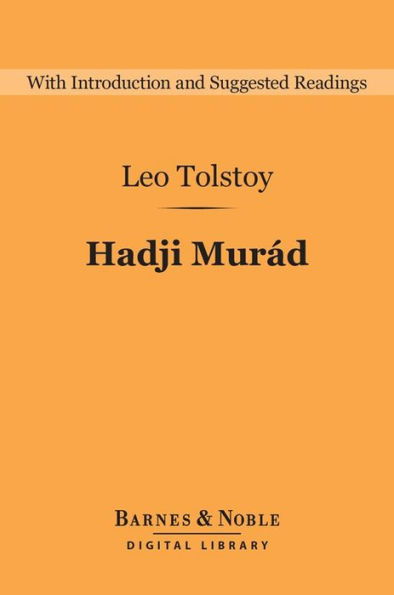This edition includes a modern introduction and a list of suggested further reading. With the resumption of Russia's military action in Chechnya in the 1990s, Hadji Murad gains new relevance, and anyone following global terrorism today will find Tolstoy's description of the nineteenth-century war all too familiar. The work provides a wealth of information about the Caucasus and on one of the most colorful figures of the nineteenth-century Russo-Caucasian war, the Avar chieftan, Hadji Maurad. Changing allegiances, inter-ethnic tensions, raids on villages, inaccurately reported war casualties, grieving mothers, and even the gruesome beheadings described so vividly in Hadji Murad still occur. Rarely are they described in prose as powerful as Tolstoy's.
"1116812911"
Hadji Murad (Barnes & Noble Digital Library)
This edition includes a modern introduction and a list of suggested further reading. With the resumption of Russia's military action in Chechnya in the 1990s, Hadji Murad gains new relevance, and anyone following global terrorism today will find Tolstoy's description of the nineteenth-century war all too familiar. The work provides a wealth of information about the Caucasus and on one of the most colorful figures of the nineteenth-century Russo-Caucasian war, the Avar chieftan, Hadji Maurad. Changing allegiances, inter-ethnic tensions, raids on villages, inaccurately reported war casualties, grieving mothers, and even the gruesome beheadings described so vividly in Hadji Murad still occur. Rarely are they described in prose as powerful as Tolstoy's.
2.99
In Stock
5
1

Hadji Murad (Barnes & Noble Digital Library)
176
Hadji Murad (Barnes & Noble Digital Library)
176eBook (Digital Original)
$2.99
$3.99
Save 25%
Current price is $2.99, Original price is $3.99. You Save 25%.
Related collections and offers
2.99
In Stock

Product Details
| ISBN-13: | 9781411468214 |
|---|---|
| Publisher: | Barnes & Noble |
| Publication date: | 03/13/2012 |
| Series: | Barnes & Noble Digital Library |
| Sold by: | Barnes & Noble |
| Format: | eBook |
| Pages: | 176 |
| File size: | 303 KB |
| Age Range: | 3 Months to 18 Years |
About the Author
From the B&N Reads Blog
